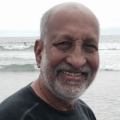The outrage: Revisit free speech
(Published in the San Francisco Chronicle, September 14, 2012)
It was a reprehensible crime. Ambassador J. Christopher Stevens and three other U.S. diplomatic staff members were nurturing excellent U.S.-Libyan relations until they were murdered by a Muslim mob in Benghazi. Many Libyans will fondly remember Stevens’ hard work to implement the U.S. policy to facilitate their liberation from Moammar Khadafy’s repressive dictatorship.
Unfortunately, these four innocent Americans have been the latest casualties of the West’s conscious or subconscious policy to foist its liberal ideology on unwilling Muslim societies. The amateurish movie “Innocence of Muslims,” produced in California by an Egyptian Copt and American evangelical Christians, portrays the Prophet Muhammad as a child molester and womanizer. It has triggered Muslim outrage in Libya, Egypt, Lebanon, Yemen, Sudan, Tunisia, Iran, Bangladesh, India, Indonesia, and probably elsewhere. But it conforms to the Western principles of freedom of speech and separation of church and state. So did the Muhammad cartoons published by a Danish newspaper, the anti-Quran movie produced by Holland’s Greet Wilder, Salman Rushdie’s novel “The Satanic Verses,” published in the United Kingdom, and other anti-Islamic works put out in the West.
All these incidents sparked indignation throughout the Muslim world. Yet Western statesmen and media generally defended the artists’ and authors’ right to produce these materials, citing the free-speech principle, even though some questioned the wisdom behind the projects.
Westerners are mostly comfortable with unbridled freedom of expression and the privatization of religion because these doctrines have evolved from the West’s unique historical experience. They stemmed from a reaction to the Catholic Church’s suppression of freedoms, the Inquisition and fierce power struggles with secular governments. Historical memories of those traumatic episodes have engendered antipathy for religion and religious values among many Westerners.
Muslim history has had no such conflicts between the laity and religious hierarchy. In fact, the Sunni branch of Islam, to which nearly 90 percent of Muslims belong, has no religious hierarchy at all. And most Muslims — religious, agnostic or even non-believers — cherish their religious heritage. So do Hindus, Buddhists, Sikhs, Jains and many other non-Western religious communities. Western governments and most Western citizens don’t seem to recognize this diversity of value systems, so they insist on universal applicability of their liberal ideology and its doctrine of freedom of expression.
They have waived the free-speech principle, however, in cases of Holocaust denials, racial slurs, advocacy of terrorism and other expressions that could endanger Western social order or national security. But they have persistently refused to prevent the vilification of Islam.
Secretary of State Hillary Rodham Clinton has staunchly justified this stance in the case of the film “Innocence of Muslims,” citing America’s “long tradition of free expression.” She added that “we do not stop individual citizens from expressing their views no matter how distasteful they may be.”
This Western insensitivity to the Islamic faith and civilization has been a major source of the smoldering anti-Americanism in many Muslim countries. The key to defusing this ominous trend lies in overcoming the delusions about universality of the West’s liberal ideology.
Islam embraces some key Western political structures and values, such as nationalism and democracy, but it rejects others, such as the ban on religious ethical standards in political discourse, the denigration of Islam in the name of speech freedom.
Islamic values and the cultural patterns built around them engender Muslims’ missions and aspirations and lend meaning to their lives. As a step toward reconciliation with anti-American Muslim masses around the world, the West should adopt measures to stop the misuse of the free-speech doctrine to attack Islam.
Mustafa Malik is an international affairs commentator in Washington. He hosts the blog ‘Islam and the West’: https://islam-and-west.com.
